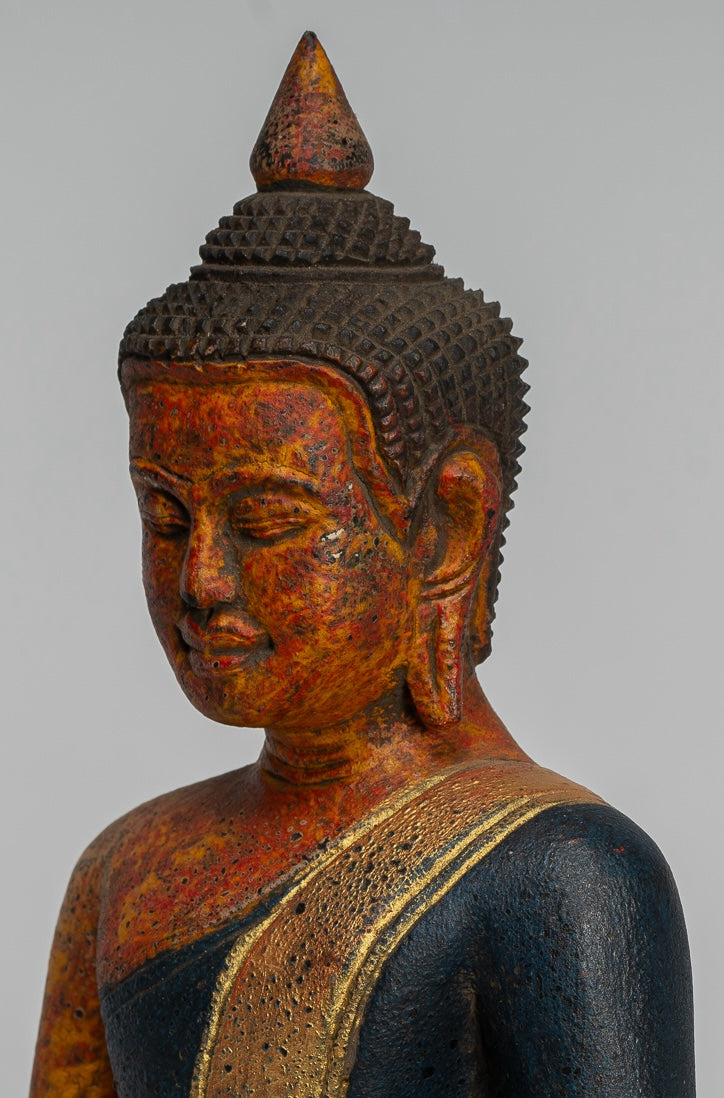
Wat vs. Chedi: Unveiling the Architectural Essence of Thai Buddhism
Introduction
In the vibrant landscape of Thai Buddhism, the architectural expressions of Wats and Chedis stand as iconic symbols of spiritual devotion and cultural heritage. While both structures share a commonality in being integral to Buddhist traditions, they serve distinct purposes and exhibit unique features.
In this comprehensive blog post, we delve into the differences between Wats and Chedis, exploring their historical significance, architectural elements, and roles within the rich tapestry of Thai religious and cultural practices.
1. Wat: The Monastic Complex
A Wat, also known as a temple complex, is a multifaceted religious structure that serves as a spiritual and communal center for Buddhist practitioners. Wats are expansive compounds that house various buildings and structures, each serving specific functions. Key components of a Wat include:
-
Ubosot (Ordination Hall): The Ubosot is the main hall where monks perform rituals, conduct ceremonies, and deliver sermons. It is a sacred space for ordination and key religious activities.
-
Viharn (Assembly Hall): Viharns are assembly halls that house religious images, scriptures, and serve as spaces for meditation and communal gatherings.
-
Chedi or Stupa: While Chedis can stand independently, they are often part of a Wat complex. In this context, they serve as symbolic representations of the Buddha's enlightenment and house sacred relics.
-
Bot (Meeting Hall): The Bot is an open pavilion where monks engage in meditation and religious discourse. It is a space for ceremonies and rituals that involve the participation of the community.
2. Chedi: The Stupa of Spiritual Enlightenment
A Chedi, also known as a Stupa, is a distinct architectural form that holds profound spiritual significance in Buddhism. Unlike a Wat, a Chedi can exist independently or as part of a larger temple complex. Key characteristics of a Chedi include:
-
Symbolic Design: Chedis often have a distinctive bell-shaped design with a spire, representing the cosmic axis and the path to enlightenment. The spire may be adorned with intricate carvings and ornate decorations.
-
Relic Housing: Traditionally, Chedis enshrine sacred relics or artifacts associated with the Buddha or revered monks. Pilgrims visit Chedis to pay homage to these relics, believing in the spiritual power and blessings they carry.
-
Meditative Focus: Chedis are places of meditation and contemplation. The circular base, square terrace, and ascending tiers symbolize the stages of spiritual awakening and the path to Nirvana.
-
Historical Significance: Many Chedis hold historical importance, representing the cultural and religious evolution of the region. They may be associated with significant events, kings, or periods in Thai history.
3. Purpose and Function
While both Wats and Chedis play crucial roles in Thai Buddhist practice, their purposes differ:
-
Wat Purpose: Wats serve as holistic centers for religious and communal activities. They provide spaces for meditation, education, and community gatherings. Wats often play a central role in religious festivals and ceremonies.
-
Chedi Purpose: Chedis, on the other hand, primarily serve as symbolic and spiritual monuments. They are focal points for pilgrimage, meditation, and reverence. Chedis embody the essence of Buddhist teachings and the journey toward enlightenment.
4. Regional Variations
The distinctions between Wats and Chedis can vary regionally and contextually. In some instances, a Wat may be named after a prominent Chedi within its complex, emphasizing the coexistence and interdependence of these structures.
5. A Harmonious Blend
In many cases, Wats and Chedis exist harmoniously within the same temple complex, complementing each other in a seamless fusion of spiritual and architectural elements. This coexistence reflects the interconnectedness of Thai Buddhist traditions and the profound symbiosis between spiritual teachings and sacred structures.
Conclusion
In the rich cultural and religious tapestry of Thai Buddhism, Wats and Chedis emerge as distinctive expressions of spiritual devotion and architectural brilliance.
Wats, with their expansive temple complexes, embody the communal and educational aspects of Buddhism.
Chedis, with their symbolic designs and spiritual significance, stand as timeless monuments to the path of enlightenment.
Together, these structures create a landscape that invites practitioners and visitors alike to explore the depths of Thai Buddhist traditions, fostering a sense of awe, reverence, and connection with the profound teachings of the Buddha.














